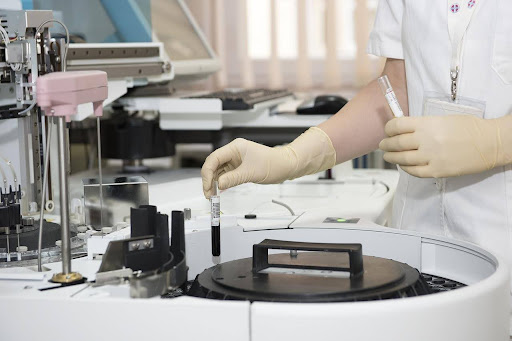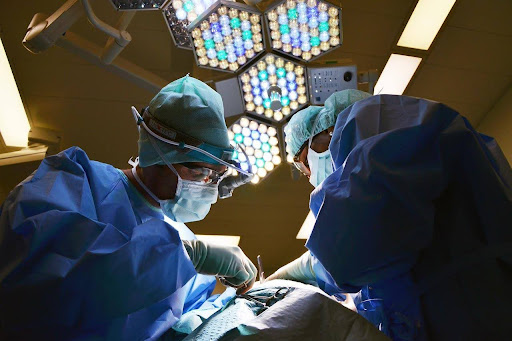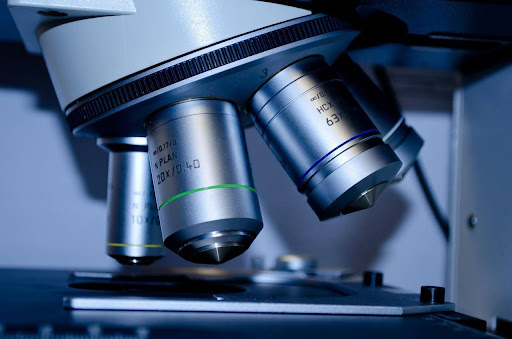Metrology is defined by the International Bureau of Weights and Measures as the science of measurement. In all disciplines of science and technology, it includes experimental and theoretical calculations and conclusions to any degree of uncertainty.
From intensive care procedures to less serious medical treatments of all types, accurate measurements of biochemical, physiological, and numerous additional patient-specific variables are vital. The data resulting from such measurements supports essential clinical decisions in patient care by physicians and nurses as well as new developments in research and technological advancements. This data also aids physicians and nurses in determining specific medication dosage amounts for patients.
Inaccurate measurements can be hazardous to patient health and safety. Errors in critical measurements can also impede advancements in therapeutic treatments. Traditional tools and mechanisms for examining and evaluating the most critical measuring quality criteria are used for such basic essential purposes as diagnosis, alarm, and titration. These specialized tools are also necessary for determining the lack of surety in certain reference methods.

Origin and Current Market Projections for the Metrology Industry
Metrology, the science of measurement, originated in 1875 when the United States and 16 other nations joined together and established one global measurement system, the metric system. This system was deemed the uniform International System of Units (SI).
The metrology industry experienced growth levels reaching USD 10.00 billion in 2022. By 2030, the growth level is expected to rise to USD 15.44 billion. This significant increase will equal a compound annual growth rate (CAGR) of 6.40% from 2022 to 2030. The steadily increasing quality requirement in industry products is considered the major market driver fueling this market growth.
Who Must Master the Basic Principles of Metrology?
The everyday practice of medicine by general practitioners and specialists requires a basic knowledge and understanding of metrology. More detailed background in the science of measurement is needed for treating critically ill patients and ensuring therapeutic success.
Physicians must be well-versed in the concepts of metrology plus its limitations and constraints. Knowledge of this measuring methodology and language is also essential to quality communications and interactions among physicians and members of varied scientific disciplines and professions.
Some Basic Principles of the Methodology and Practice of Metrology
Primary principles of the study and use of metrology in science and medicine today include specific terms and categories. All metrological terms can be categorized under the following five major headings:
Quantities and Units
A quantity is defined as a property of a substance, body, or phenomenon that is assigned a magnitude, which can be noted as a number and a reference. A quantity is a scalar, and a scalar is a field element. It is utilized for the purpose of defining a vector space. Yet, a vector (or tensor) consists of quantities. Thus, the vector is also termed a quantity.
A reference may be a unit of measurement or a measuring procedure. It may also be a combination of measurement units and procedures or a reference material. Characteristics of a quantity are a unit and a dimension as well as a value. International quantities use seven base quantities as their foundation. In addition, there are five more quantities that are frequently used in medicine.
The first seven entries in the following chart are the seven International base quantities, and the subsequent five are the base quantities used in medicine.
Quantity……………………..Dimension....…Unit…......…Symbol
Length……………………………………...L……………meter…………….m
Mass………………………………………….M…………kilogram…………kg
Time………………………………………….T…………..second…………..s
Current…………………………………….I……….…..ampere…………..A
Temperature…………………….......K……………..kelvin…………….K
Amount of substance…………….N……………..mole……………..mol
Luminous intensity………………….J………………candela………….cd
Force……………………………………MLT-2………..newton…………..N
Pressure……………………………..ML-1T-2..….…pascal…………...Pa
Work or energy………………...ML2T-2…………joule……………...J
Power…………………………………ML2T-3…………watt……………..W
Frequency……………………………T-1………………hertz…………….Hz
Measurement
The term measurement refers to an experimental process of determining one or multiple values that can be assigned to a quantity. The true quantity value is unknowable since it differs at various specific times. A measureand is the particular quantity being measured. The method of measurement is founded on a principle, which is a given chemical, biological or physical phenomenon.
A reference measuring process is a procedure agreed upon as determining the measurement results suited to the quantity. Accuracy of measurement is the degree of proximity of agreement between a true quantity of a value and the value measured. Degree of trueness in measurement is the proximity of agreement between the true or reference quantity value and the average of an infinite count of repeated measurements of quantity values.
Error of measurement is the discrepancy between a reference quantity value and a measured quantity value that is unique. Uncertainty of measurement is a parameter describing the distribution of the quantity values assigned to a measurand according to the criteria used.
Devices for Measurement
Measuring devices are instruments designed for making accurate measurements as singular tools or in combination with the use of one or several additional devices. A gauge is a measurement instrument such as a transducer, which outputs a quantity. This quantity is frequently an electric current that is directly related to an input quantity. The input quantity is typically a physiological signal.
Properties of Measuring Devices
Each measuring device is identified by its specific properties or quality criteria. These devices are designed with measurement ranges of value sets for a certain type of quantity. Each instrument can determine a specific quantity type with the accepted degree of uncertainty within defined conditions.
Measurement sensitivity is the quotient of the alteration in an indication and the value change in a measurand value. Selectivity is employed concerning a given measurement process to determine quantity values for one or multiple measurands independent of other measurands or quantities present. For instance, using selectivity, technicians can calculate cardiac output in pulse contour systems, independent of measurements of blood pressure.
Resolution is the smallest measurable alteration in a quantity that results in a recognizable change in the indication produced. Stability is a measurement device’s property that maintains the ongoing consistency of its metrological accuracy. Step response time is the time elapsing from the instant that the quantity value of an input measuring device experiences a sudden alteration between two given quantity values that are constant and the settlement of a resulting indication within given limits surrounding the final settled value.
Maximal permissible error measurements are extreme values of errors in measuring values. These error values are permissible according to given specifications for a certain measurement, instrument, or measuring system. While trueness, accuracy, and preciseness are measurements for qualifying, sensitivity, resolution, selectivity, stability, and step response time are qualifying criteria for measuring instruments.
Measurement Standards (Etalons)
Every measurement must meet a specific measuring standard (Etalon). The Etalon is the tangible representation of a given quantity’s definition, using a designated quantity value and a relevant measurement uncertainty for reference.
A prerequisite for any calibration, or quantity measurement, is a measurement standard. This calibration may be noted with a calibration diagram, curve, or table. The most accurate result can be determined by an initial calibration to ascertain the approximate magnitude of the necessary adjustment followed by the adjustment and a final recalibration.
While medical professionals desire improved data collection and analysis, they also want systems and devices that offer simpler, easier operation. Well-trained equipment operators can master new device use faster and more effectively when the learning curve and confident performance can be mastered within less time. Especially since many types of metrological devices are used in the diagnosis and treatment of serious illnesses and medical conditions, shorter training times for well-qualified operators are of great value.

Important Uses of Metrology in Contemporary Medicine
Major important uses of metrology in medical research and practice today include the following:
- Measuring Dosage of Medicine. Metrological methods are used in the development of calibration processes for drug delivery via dosage instruments today. The devices tested are insulin pumps, a syringe pump, and an infusion device analyser (IDA). Measurements of reference liquid viscosity have also been performed to validate given uncertainties of pipe viscometers.
- Surgeries. Advanced laser models are frequently used in medical, cosmetic, and aesthetic surgical procedures today. Scar tissue can be removed or improved with the use of laser tools. Laser eye surgery is accomplished effectively and efficiently with the use of laser equipment. Hair removal and other types of aesthetic surgery are also performed using laser devices.
- Labs. Radian Laser Trackers and scanning arms are used in medical laboratories for research and testing procedures. These advanced model tools ensure accuracy. They are expertly calibrated and certified for quality metrological results. Worn or malfunctioning parts can be replaced quickly and efficiently if needed.
- Measuring Growth. Metrology devices can calculate growth rates in bodily tissues, data assessment quality, and patient recovery rates. This science of measurement is actually a form of “meta-measurement” because it performs at a higher level to detail the aspects and properties of typical measurement procedures. Metrology is the measuring of measurement in medicine.
- Complete Measurement of Surgical Drills, Milling Cutters, etc. Using metrology techniques, medical professionals can determine the properties, capacities, and operational levels of such medical equipment as surgical drills, milling cutters, and many other valuable items of medical equipment.
Examples of Different Metrology Devices Currently Used in Medicine
Types of metrology devices currently in use in the medical field today include the following:
• Clever Sensors. Sensors providing positional data are directly connected to industrial networks. High-precision measuring instruments operating over long-distances come under this category. Sensors that offer repetitive accuracy of 1 mm. or less permit high-bay storage with unequaled density.
• Probes. Various types of probes are frequently used in the medical field. Ultrasound probes (Linear Transducers) are used in all types of ultrasound procedures in hospitals, clinic settings, and ambulatory centers for surgery. Laser probes like continuous-wave (CW) laser probes and pulse laser probes as well as single and cluster laser probes are in common use in ophthalmology, dermatology, rheumatology, orthopedics, and in dentistry.
• Software. Today, some medical companies utilize five or more varied software brands for measurements using 3D measuring technologies. Early models of CMMs (coordinate measuring machines) were closed systems, each with their own software. For this reason, several different software brands and products were necessary in 3D measurement laboratories.
• Advanced Handheld Tools. There are handheld models in medical probes, lasers and scanning equipment. Some digital gauges are also handheld. Probes used in dentistry and some cosmetic and aesthetic procedures are also small, compact, handheld equipment.
• Different Types of Gages Used in Metrology. One of the most typical measuring tools used in metrology is the handheld gage. These instruments calculate specific dimensions, including width, height, thickness, radius, and angle. The most popular types of gages currently in use are snap, plug, ring, and surface. Snap gages (gap gages) are useful for measuring the diameter or thickness of a specific component.
• Coordinate Measuring Machines. CMM machines can measure instruments or other types of items for studying or copying purposes. They are designed to measure the exact distance between two points on a three-dimensional product. For this reason, CMM machines are very useful for reverse engineering parts and for cost-efficient production of new parts or products.
• Vision Stations. Optical digitizers, scanners, and vision systems such as Ram Optical and OGP are in popular use in medicine today. They are often used in conjunction with various CMM brands and models for making measurements.
• Laser Scanners. The most recent generation of scanCONTROL 30xx laser scanners is impressively powerful, offering precision performance and unique adaptability. These scanners are in popular use for top-precision 2D/3D profile measurements.
• Surface Roughness Instruments. Devices that read degrees of surface roughness and display the results digitally are battery powered. They are often utilized in labs for measuring surface area unevenness.
• CT Scanners. Spectral Computed Tomography (dual-energy CT) makes use of two separate x-ray photon spectra energies. This advanced design in medical imaging equipment is helpful for identifying and characterizing tissues using optimal-quality x-ray images. Its two separate energy spectra create precise material density-founded CT images.

Conclusion
Since 1875, following the establishment of the International System of Units (SI), metrology has been accepted globally as the science of measurement. Since its inception and establishment, metrology has experienced continuous growth and is currently flourishing in its frequency of use in many areas of medicine and science. Devices and tools used in the practice of metrology enable accurate medical diagnosis, alarm, and titration. These finely tuned instruments are also essential for identifying the lack of surety in specific reference methods.






